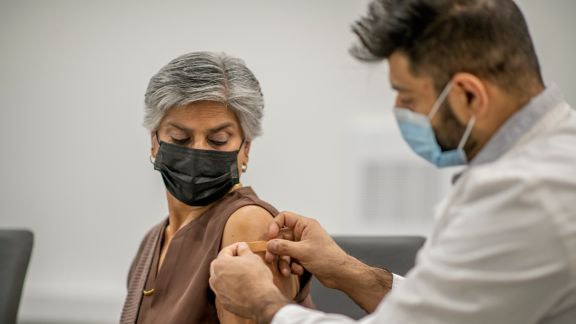Keeping Eligible Children Enrolled in Medicaid

Problem
More than 42 million children risked losing Medicaid coverage during the post-pandemic unwinding process.
Medicaid is an important source of health coverage for children, as is the federal Children’s Health Insurance Program (CHIP), which provides low-cost coverage to families that earn too much to qualify for Medicaid. As of March 2023, over half of all U.S. children (42 million) were enrolled in Medicaid and CHIP. Medicaid covers vulnerable children, including more than 75 percent who live in poverty, most children in foster care, and almost half of those with special health care needs. As part of the federal government’s response to COVID-19 pandemic, states received enhanced federal funding for keeping individuals enrolled in Medicaid or CHIP during the federal public health emergency. Starting in April 2023, states began unwinding the continuous enrollment provision of the COVID-19 public health emergency and redetermining Medicaid eligibility for all enrollees.
Medicaid unwinding resulted in the largest shift in U.S. health insurance coverage since the implementation of the Affordable Care Act and presented a risk that children might lose coverage. Stakeholders across the health care system—including health plans, providers, and advocates—have worked to maintain Medicaid coverage for eligible children and their families throughout the redetermination process.
Solution
NORC identified collaborative strategies that help plans and providers support continuous health coverage for children.
We interviewed Medicaid health plan representatives, national American Academy of Pediatrics (AAP) staff, and state AAP chapter leaders to learn which collaborative strategies they employed to maintain children’s coverage during Medicaid’s unwinding. We conducted eight interviews from May to August 2024.
Result
Health plans and providers now have proven approaches for helping to keep eligible children enrolled.
Our interviews with health plans and providers identified six collaborative strategies that we developed into a case study for future use. They include:
- Co-developing outreach materials to ensure consistent messaging from providers and plans
- Coordinating to update addresses so members received notices about renewals
- Sharing renewal data with providers to facilitate targeted member outreach
The case study also summarized our interview findings, highlighting promising practices and barriers to implementing them, and included new recommendations for how health plans and providers can strengthen their collaborations to support keeping eligible children enrolled.
As eligibility renewals will continue to be an annual occurrence for children in state Medicaid programs, these strategies and recommendations will, ideally, continue to provide longer-term value to keeping eligible kids enrolled and covered.







